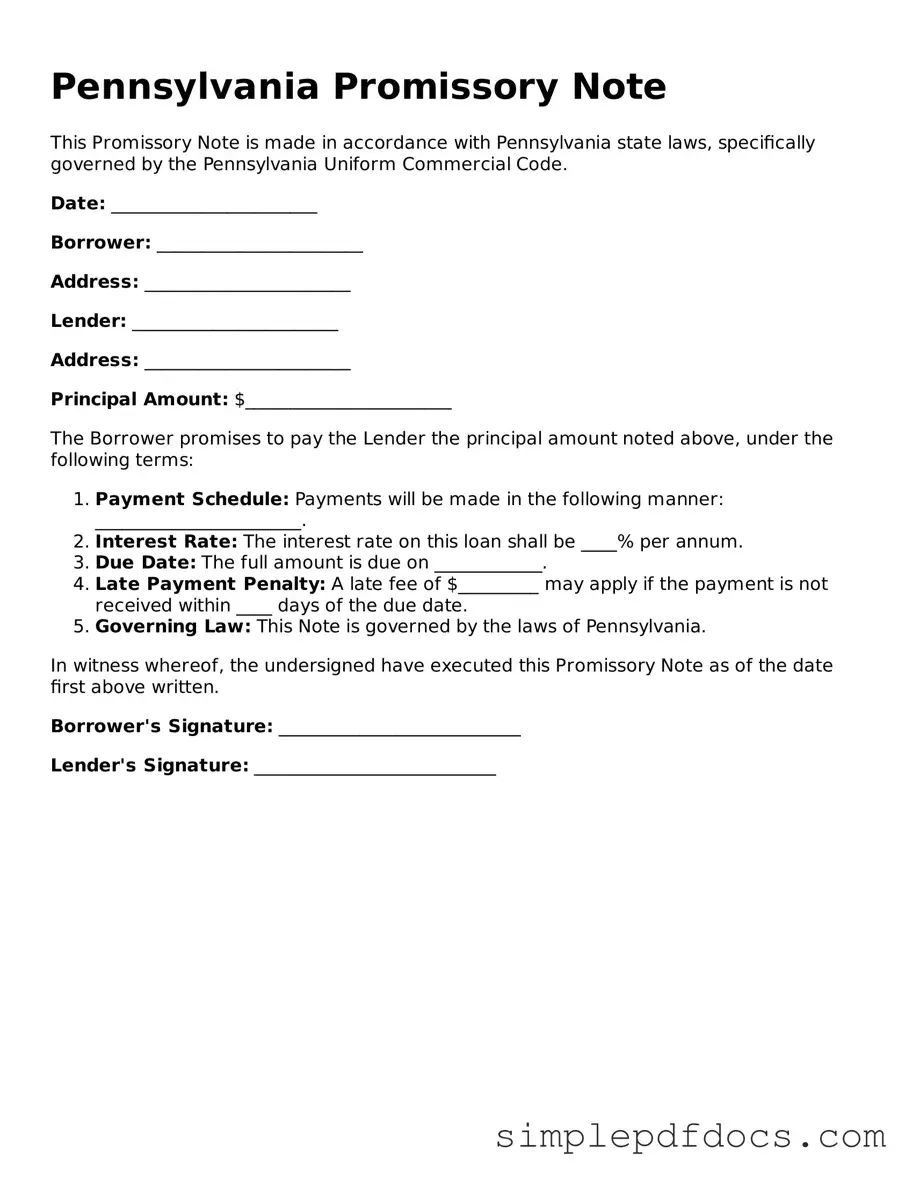Legal Promissory Note Document for the State of Pennsylvania
A Pennsylvania Promissory Note is a written promise to pay a specific amount of money to a designated person or entity at a specified time or on demand. This document serves as a legal instrument that outlines the terms of the loan, including interest rates and payment schedules. Understanding its components is essential for both lenders and borrowers to ensure clarity and enforceability in financial transactions.
Get Document Here
